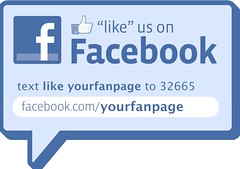Why you must bet the farm on mobile and social media
 Mitch Joel‘s keynote at MarketingProfs (which is a neat evolution of a talk I saw him give at PodCamp Toronto years ago) sparked an idea in my head about how we’re communicating with customers and what it means for your business. In his talk, he mentions the internal conversation, the one to one conversation, and the one to many conversation – how marketers can interact with their audiences.
Mitch Joel‘s keynote at MarketingProfs (which is a neat evolution of a talk I saw him give at PodCamp Toronto years ago) sparked an idea in my head about how we’re communicating with customers and what it means for your business. In his talk, he mentions the internal conversation, the one to one conversation, and the one to many conversation – how marketers can interact with their audiences.
Let’s take this a step further. Before we do, let’s look at a few changes in computing and communications.
The 1990s were the decade of email and email marketing. Computers were leashed to the wall for nearly every task. Even my ultra-awesome at the time Powerbook 1400cs (cs stood for color screen, imagine that!) needed to be tied to the wall for any form of communications. Most people were still computing using machines the size of aircraft carriers, and while the Web had just gotten popular amongst the high-tech crowd, by no means was it mainstream. Email was it, partly because email was something that people could grasp onto and understand immediately – form of electronic communications that worked very much like the real world’s analog equivalents. There were letters, addresses, inboxes, etc. – a good entry point for many.
2000-2009 was the decade of the Web, unquestionably. Computers got smaller and much, much cheaper. The decade started out with the Pentium III line of processors barely topping 1 GHz, and ended with computers shipping with four-core CPUs. People figured out the Web, they figured out what was possible beyond making a brochure of their company. YouTube, MySpace, Facebook, and Twitter arrived. Wireless Internet access via Wi-Fi finally got hot and achieved some level of market penetration.
Here we are in 2010. Computers are shipping now with as much processing power in a handheld as in a desktop, and Wi-Fi + 3G are the standard rather than the exception. The latest computer is fully mobile – the iPad – needing only to stop to recharge its internal battery and not much else. All this and we’re barely into the mobile revolution. This corresponds with the latest change of mind – social media.
While social media got its start in the era of the Web, it’s rapidly evolving to take advantage of the devices now afforded to it in ways the regular web simply cannot. There’s nothing more social than hanging out with friends and passing a mobile device for someone to have a quick laugh at a text, a mobile pic, or a Tweet. There’s nothing more social than sitting with colleagues and just handing someone an iPad to say, “look at this…”
As devices get smaller and easier to use, they become more social. Clay Shirky said it best – when something becomes technologically boring, it becomes socially interesting. In the case of the iPhone and iPad, the interface becomes so intuitive so quickly that it fades away to nothingness, leaving only you and what you aim to accomplish.
So let’s tie all this together. Email was and is, for functional purposes, the one to one conversation. Yes, you can broadcast email, yes you can reply to all in a manner that’s as convenient as it is painful, but fundamentally email is a one to one conversation.
The Web was the one to many conversation. Put up your site and as long as your server can handle the traffic, you can do one to many conversations better than at any point in human history. You can get noticed, become popular, and do business at greater velocity than ever before.
Social – and the mobile devices that will increasingly power it – is the next logical extension of Mitch’s framework. Social is the many to many conversation, where you as a marketer are an active participant, but you’re not in control, not in charge, not even directing the conversation. You are among your peers, interacting, collaborating, and creating.
Just as the rules for email are different than the rules for the Web, so are the rules for social different than what preceded it. Chris Brogan and Greg Cangialosi often like to quip that the strategy of choice is “be there before the sale” but that’s not enough. You have to be relevant before the sale. You have to be credible before the sale. You have to earn a seat at the table not only before but at the time the decision is being made, which means you have to have persistent presence of mind in the business cycle of your prospective customers.
In this framework, that also means that everything you do has to have at least an idea of how it will appear in a mobile computing landscape. If all you do is broadcast useless updates on Facebook and Twitter, you won’t be shared or talked about. You’ll stop appearing in people’s streams – and when the majority of communication is done on smaller form factor mobile devices, what little slice of screen real estate attention you have left will vanish.
If someone were to pass around your web site on a mobile device at an executive roundtable, what would they see?
- How easy is it to find a call to action?
- How easy is it to find a call to share?
- How easy is it to pass around by word of mouth?
The future based on trend growth is clear: mobile devices will power the way your prospective customers communicate, and social media will be the many to many conversation medium in which you will do business. Bear in mind, there will still be one to one and one to many – but there will also be many to many, and you need to be there.
Are you ready?
Did you enjoy this blog post? If so, please subscribe right now!



Get this and other great articles from the source at www.ChristopherSPenn.com! Want to take your conference or event to the next level? Book me to speak and get the same quality information on stage as you do on this blog.
 No such thing as a free lunch
No such thing as a free lunch



 … but that’s not enough. What you need on your side are champions. Not athletes, but in the truest medieval sense of the ideal, knights who will step up to battle for your cause. Bear in mind, we’re not talking about armed physical combat (but boy, wouldn’t that shut some critics up really fast), but having champions who are well-respected members of their community defend you in that court of public opinion.
… but that’s not enough. What you need on your side are champions. Not athletes, but in the truest medieval sense of the ideal, knights who will step up to battle for your cause. Bear in mind, we’re not talking about armed physical combat (but boy, wouldn’t that shut some critics up really fast), but having champions who are well-respected members of their community defend you in that court of public opinion.


 Imagine for a second you’re on a road trip.
Imagine for a second you’re on a road trip.


 Facebook’s been mailing “Like” signs to small businesses to encourage use of their fan pages. But suppose you didn’t get one from Zuck? Or maybe you need more than one? Rest easy! This Photoshop template will help you get rolling – just download it, edit in Photoshop, and be on your way.
Facebook’s been mailing “Like” signs to small businesses to encourage use of their fan pages. But suppose you didn’t get one from Zuck? Or maybe you need more than one? Rest easy! This Photoshop template will help you get rolling – just download it, edit in Photoshop, and be on your way.


